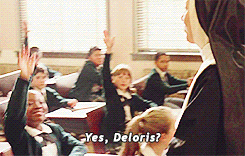Modern life is often stressful, and it is rightly advised that we slow down, take some time for ourselves, and relax. But have you ever found yourself heeding that advice—relaxed, completely at ease—only to realize that you’re getting further and further behind in your work and your home is an utter mess? We can take that good advice to relax too far, and it might be time to put some more effort into our responsibilities.

Or do you find yourself hyper-focused on work, trying to live up to your or other’s expectations of your absolute best effort? But after time, you burn out and struggle to keep up the pace…
So what are we supposed to do, relax or work hard? Well, both are important—it’s a matter of knowing when to focus more on which.
Understanding the Relax ~ Work Hard Dichotomy
We don’t always recognize it, but there’s a continuum that stretches between these two endeavors—from relaxation to hard work—with a lot of space in between. Sometimes we need to slow down, zoom out, and take a look at where we are, so we can then make some adjustments.
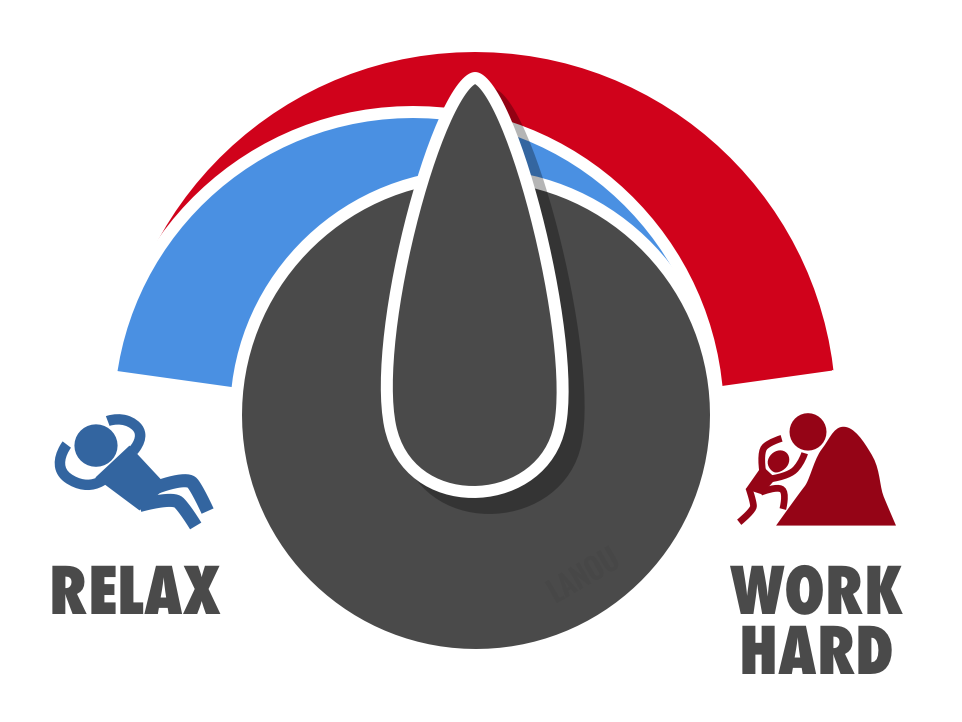
It’s important to recognize a couple of things about this dichotomy:
- Both endeavors are good: Relaxing and working hard are both positive things in their own right. It’s not that we need to avoid one or the other entirely.
- Too much of either is bad: Cranking the dial all the way to Relax may mean that we shirk our responsibilities. Similarly, going whole-hog on Work Hard can lead to that feeling of burnout.
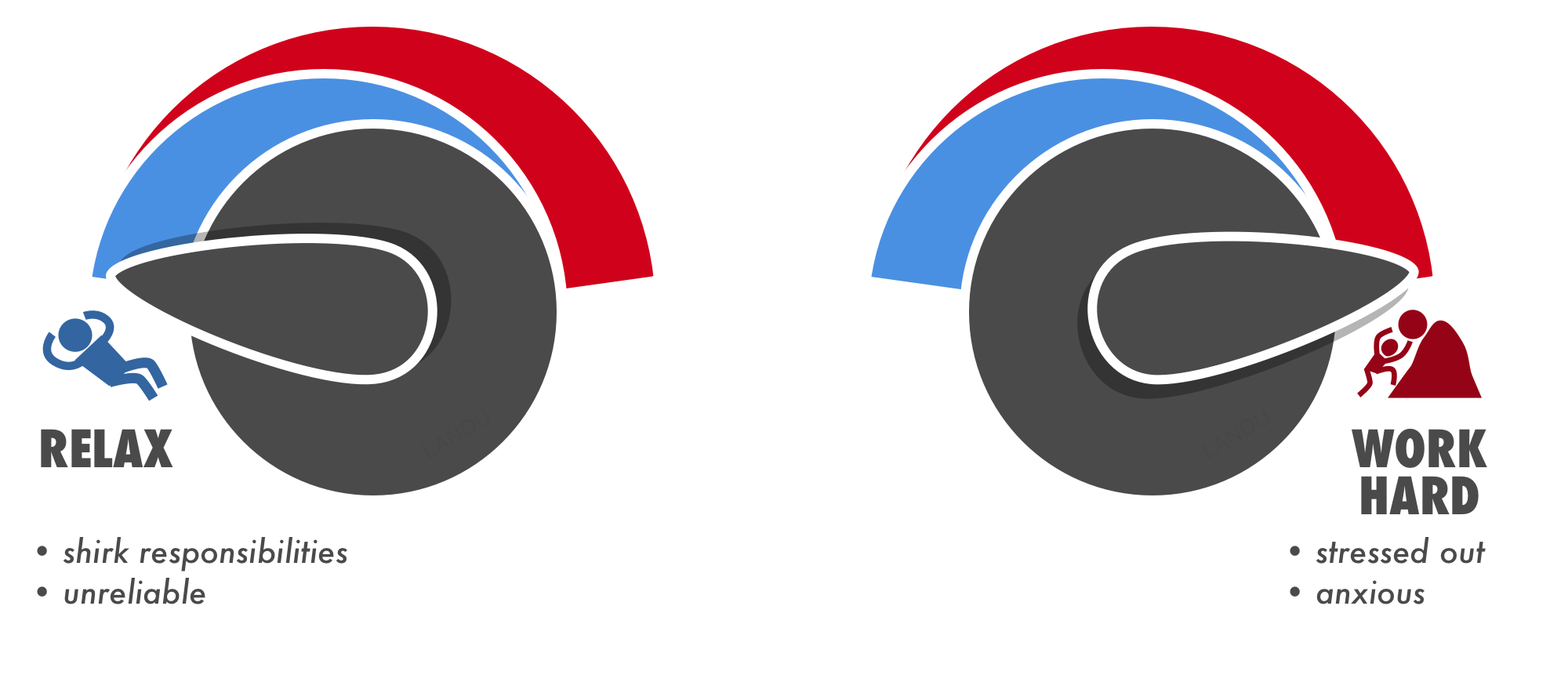
So what is the sweet spot between these two endeavors? The Relax ~ Work Hard Dial can help you figure out just how much to push yourself to focus on work, and how much to kick back and relax. But before you make a change, figure out where you’re starting from.
Evaluating Your Starting Point
It’s unhelpful to offer blanket advice, devoid of context: “Stop and smell the roses” may be good words of wisdom for a hard worker, but what about for the super-relaxer?
Before you decide to make a change in your actions, honestly assess your default mode. Do you tend to stress yourself out with hard work, or do you lean lazy if allowed? Try to gauge for yourself, and even ask others you know well and trust for their take—they may have a challenging, but helpful perspective.
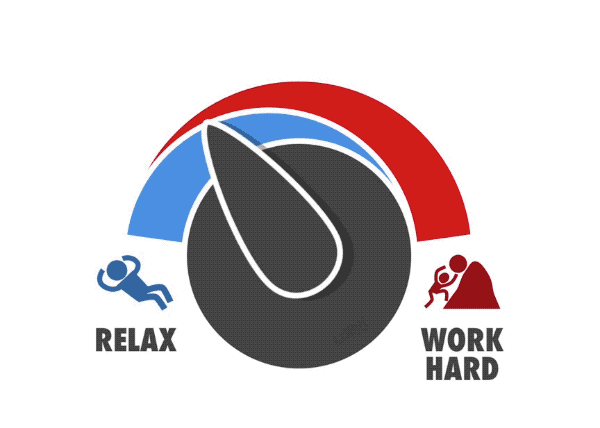
Time to recognize you’re slacking and get to work?
If you typically relax and take it easy when there’s work to be done, consider when you need to crank up the hard work. You want to avoid people seeing you as unreliable, or receiving repercussions from school or work.
Or, are you the kind of person who constantly stresses yourself out about expectations? Do you need to get every responsibility done, on time, at your maximal effort? Maybe you could benefit from nudging the dial towards relaxation from time to time. It may help you feel less stressed and enjoy your free time.
Of course, different situations will call for different adjustments. It all depends on the context.
Consider the Context and Adjust
For specific situations, we can consider the context to figure out what to change.
You’re a high school freshman, and a decent student. You get most of your homework done on time. Today it’s Sunday, and you have a geometry test in two days. You know the content pretty well, and you’ve just done your latest math homework, and are considering calling it a night. You could stop and catch up on the latest show you’re binge-watching. After all, you’ve been seeing so much about self-care on social media lately… But you actually have a bit more attention and energy left, and spending another 30 minutes studying will likely help you get your grade up before midterm progress report. It probably makes sense to nudge the dial a bit towards work.
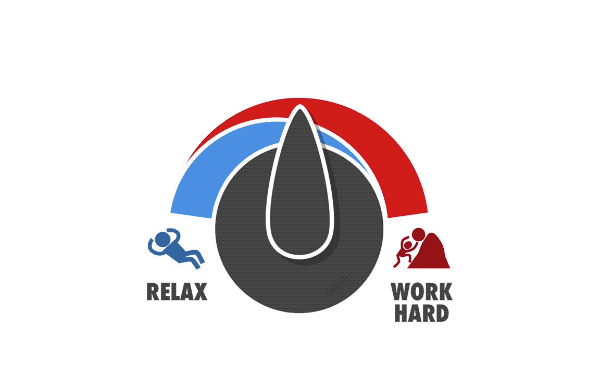
To make this (hopefully) helpful decision, you’ve considered the important context of you circumstances, like:
- how important is the task?
- how time bound is it?
- what have you been doing lately?
- what do you have energy for right now?
But of course considering these same factors—given different context—you may arrive at the decision to adjust the dial towards relaxation:
You’re in 8th grade, and you have a history test tomorrow. Every time you have a quiz or test, you spend hours reviewing the textbook, your class notes, and doing extra research online, days in advance. In this current unit, you know the information inside and out, but occasionally get tripped up on a specific date you should know. Do you keep plugging away, or just go to sleep? Maybe you can study for another short while, but give your brain a rest and take some short rounds of Drop 7 (or your phone game of choice). So you make the adjustment to relax more, but to a degree that will still make you comfortable.

Let the Dial Be Your Guide
All work and no play makes Jack… you get the point. It’s not good. But all play is not the answer either. To find the sweet spot between relaxing and working hard, first understand that this dichotomy exists, and then evaluate your starting point to see if you can catch yourself in an old habit. And then, finally, adjust how much you relax or work hard according to the context. Hopefully, with this level of thoughtfulness, you’ll be happy with your decision you make.








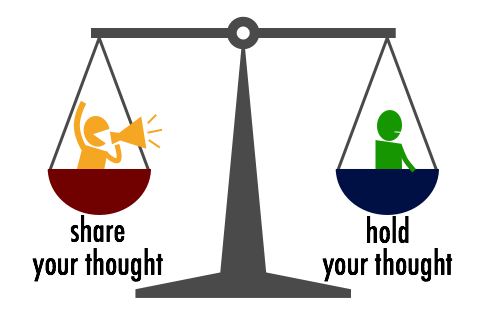 this is a total
this is a total 

 Persevering
Persevering 


 Providing supporting through scaffolding is necessary, but too much and students aren’t free to make mistakes and draw their own conclusions.
Providing supporting through scaffolding is necessary, but too much and students aren’t free to make mistakes and draw their own conclusions.